http://www.dengue.info Aedes Aegypti: Dengue mosquito in action! This video shows the Aedes Aegypti mosquito filmed in macrophotography and binocular cinemat...
Get Started for FREE
Sign up with Facebook Sign up with X
I don't have a Facebook or a X account

| Tags |
|---|
 Your new post is loading... Your new post is loading...
 Your new post is loading... Your new post is loading...
Parasites use clever ploys to stay alive while destroying their victims.
[...]
2) Head-bursting fungus
In a bizarre death sentence, the fungus Ophiocordyceps unilateralis turns carpenter ants into the walking dead. The fungus prefers the undersides of leaves of plants growing on the forest floor. That's where temperature, humidity and sunlight are ideal for the fungus to grow and reproduce and infect more victims. The parasite gets the insects to die hanging upside down, and then erupts a long stalk from their heads with which it sprinkle its spores to other ants. Fossil evidence recently suggested this fungus has zombified ants for millions of years.
[...]
5) Ant-deceiving butterfly
Just like cuckoo birds, the Japanese lycaenid butterfly Niphanda fusca lays its eggs in the nests of other species, in this case the carpenter ant Camponotus japonicus. The caterpillars that hatch from these eggs then dupe the ants into adopting them by mimicking the odor of the high-ranking male ant caste. Such a chemical disguise explains why these "social parasite" moochers are enthusiastically fed by their hapless hosts in preference to the ants' own brood.
[...]
6) Male-killing bacteria (photo)
The genus of bacteria known as Wolbachia infests a whopping 70 percent of the world's invertebrates, and has evolved devious strategies to keep spreading. In female hosts, the germ can hitch a ride to the next generation aboard the mother's eggs, and since males are essentially useless for the bacteria's survival, the parasite often eliminates them to increase the rate of females born, by either killing male embryos outright or turning them into females. Incredibly, the bacteria have even found a way to sneak their entire genomes into the cells of fruit fly hosts.
[...]
7) Web-manipulating wasps
Although parasites harm their hosts, they don't usually kill them, if only to keep themselves alive. Not so with parasitoids, which ultimately destroy and often consume their hosts. Parasitoid wasps, which inspired the monster in the movie “Alien,” lay their eggs inside their victims, with the offspring eventually devouring their way out. A number of the species control their host's minds in extraordinary ways — the larvae of the wasp Hymenoepimecis argyraphaga, which infests the spider Plesiometa argyra, makes their victims spin unusual webs especially well-suited for supporting their cocoons.
[...]
Via David Hughes
The butterfly flapped its colorful wings while the spider sat waiting to jump its prey and inject venom into the butterfly’s head.The spider aimed at the head, jumped and hit the butterfly’s wing — fooled again.
For three months, Andrei Sourakov watched such interactions between jumping spiders and butterflies, recording them with a camera. His findings were published online March 8 in the Journal of Natural History.
Sourakov, a collection coordinator at the Florida Museum of Natural History’s McGuire Center for Lepidoptera and Biodiversity, began the experiment because research has focused on how the colors and pattern of a butterfly’s wings are thought to deceive birds, but not on how they fool other predators, such as spiders.
He wanted to see if a specific color pattern — the “false head” pattern found on many hairstreak butterflies that mimics a butterfly’s own head — could fool spiders too.
He used 15 individual butterflies and moths belonging to 12 different species. The spider successfully captured 13 that did not have the “false head.” But the Red-banded Hairstreak butterfly, whose spots imitate a false butterfly head, escaped all 16 attacks from the jumping spider. Via Matti Virtala
Derniers articles publiés :
• Joseph Blaise Pando, Fernand-Nestor Tchuenguem Fohouo, Joseph Lebel TamesseActivité de butinage et de pollinisation de Xylocopa olivacea Fabricius 1787 (Hymenoptera: Apidae) sur les fleurs de Vigna unguiculata (L.) Walp. 1843 (Fabaceae) à Yaoundé-Cameroun
• Damien Polo Lozano, Emilie Bosquée, Thomas Lopes, Julian Chen, Cheng Deng Fa, Liu Yong, Zheng Fang-Qiang, Eric Haubruge, Claude Bragard, Frédéric FrancisEvaluation de la diversité de l’entomofaune en cultures maraîchères dans l’est de la Chine
• Tsiresy Maminiaina Razafimanantsoa, François Malaisse, Noromalala Raminosoa, Olivia Lovanirina Rakotondrasoa, Gabrielle Lalanirina Rajoelison, Misha Ratsimba Rabearisoa, Bruno Salomon Ramamonjisoa, Marc Poncelet, Jan Bogaert, Eric Haubruge, François VerheggenInfluence de la plante hôte sur les stades de développement de Borocera cajani (Lepidoptera: Lasiocampidae)
From
phys
A new species of leaf miner from the important family Gracillariidae has been recently discovered in the depths of the Brazilian jungle and described in the open access journal Zookeys.
Abstract
A new species of Meropeidae (Mecoptera) from Brazil, Austromerope brasiliensis sp. n., is described, representing only the 3rd extant species described in this family and the 1st record of the family from the Neotropical region. The distribution and biogeography of the family are discussed and we propose that Meropeidae originated before continental drift and then divided into two branches, northern and southern, with the breakup of Pangea. Identification keys for the Neotropical families of Mecoptera and for the species of Meropeidae are provided.
"Our faculties are more fitted to recognize the wonderful structure of a beetle than a Universe." —Charles Darwin, Notebooks From Eurekalert we have the description of a new species in a group I di...
It's been known for decades that animals such as chimpanzees seek out medicinal herbs to treat their diseases. Via François Verheggen
Bernadette Cassel's insight:
« La liste des animaux pouvant se soigner d'une maladie qui les atteint s'allonge: le Monarque »
(via Twitter https://twitter.com/FrVerheggen/status/322626744169398272)
It is well known that spiders are effective at dispersal and colonization, in part because of their ability to 'balloon' - small spiders (i.e., immature specimens, or adults of species that are sma...
Bernadette Cassel's insight:
« Voyageant à 5 km d'altitude les araignées colonisent de nouveaux territoires. »
(via Twitter https://twitter.com/ROGERLATOUR/status/321634919946272768)
PLOS ONE: an inclusive, peer-reviewed, open-access resource from the PUBLIC LIBRARY OF SCIENCE. Reports of well-performed scientific studies from all disciplines freely available to the whole world. Via François Verheggen
Bernadette Cassel's insight:
« Les coccinelles et le marquage phéromonal de leur site d'agrégation, une étude gembloutoise à lire dans PlosOne »
(via Twitter https://twitter.com/FrVerheggen/status/321567379798761472)
In Bug Grad School I learned about a crazy group of flies called Hippoboscidae, or louse flies. These flies have adopted an ectoparasitic lifestyle, which means they live on other animals much lik...
Bernadette Cassel's insight:
Souffler sur des chauves-souris. Pour la science.
We might as well end my spider campaign on a high note - the most beautiful spiders I have ever seen, PEACOCK SPIDERS! They're just 5mm long and are confined to eastern parts of Australia.
Bernadette Cassel's insight:
A new species of leafcutter bee, Megachile chomskyi, is described from Texas, United States.
Bernadette Cassel's insight:
SUR ENTOMONEWS :
→ Une nouvelle espèce d'abeille coupeuse de feuille du Texas : Megachile chomskyi http://sco.lt/83ZNXF
|
Borocera cajani Vinson (Lepidoptera: Lasiocampidae) est un papillon séricigène endémique de Madagascar dont la soie est utilisée dans le domaine textile. Ce vers à soie est polyphage et colonise la forêt des hautes plaines centrales constituée principalement de Tapia (Uapaca bojeri). Au sein de ces forêts, les chenilles de B. cajani sont couramment observées sur deux plantes hôtes : le Tapia et le Voafotsy (Aphloia theiformis).Dans cette étude, nous avons évalué des paramètres de différents stades (taux de survie, durée des stades, poids et taille, fécondité des adultes,…) de B. cajani élevé sur ces deux plantes hôtes.
[...]
Bernadette Cassel's insight:
Photo du papillon Borocera cajani :
→ Silk moths in Madagascar: A review of the biology, uses, and challenges related to Borocera cajani (Vinson, 1863) (Lepidoptera: Lasiocampidae) http://popups.ulg.ac.be/Base/document.php?id=8749)
Via David Hughes
Bernadette Cassel's insight:
New approaches: David G. Biron and Hugh D. Loxdale
Host–parasite molecular cross-talk during the manipulative process of a host by its parasite J Exp Biol 2013 216:148-160. ; doi:10.1242/jeb.073825
Abstract Understanding the processing of odour mixtures is a focus in olfaction research. Through a neuroethological approach, we demonstrate that different odour types, sex and habitat cues are coded together in an insect herbivore. Stronger flight attraction of codling moth males, Cydia pomonella, to blends of female sex pheromone and plant odour, compared with single compounds, was corroborated by functional imaging of the olfactory centres in the insect brain, the antennal lobes (ALs). The macroglomerular complex (MGC) in the AL, which is dedicated to pheromone perception, showed an enhanced response to blends of pheromone and plant signals, whereas the response in glomeruli surrounding the MGC was suppressed. Intracellular recordings from AL projection neurons that transmit odour information to higher brain centres, confirmed this synergistic interaction in the MGC. These findings underscore that, in nature, sex pheromone and plant odours are perceived as an ensemble. That mating and habitat cues are coded as blends in the MGC of the AL highlights the dual role of plant signals in habitat selection and in premating sexual communication. It suggests that the MGC is a common target for sexual and natural selection in moths, facilitating ecological speciation. Via The aphid team@INRA Rennes
Scientific research is spotting a surprising range of animals that engage in same-sex relationships. Here are ten:
[...]
It’s a fact: bugs can be gay. Dragonflies are among the most highly evolved predators in the insect world, and they’re also among the most demonstrative — engaging in spectacular in-flight ballets as well as serious sensual encounters with other dragonflies.
But the presence of the opposite sex is not always a prerequisite to dragonfly dating; investigations have revealed a surprisingly high frequency of matings between same-sex dragonflies. Understanding the reasons for same gender pairings among such small invertebrates is challenging, and the interactions are poorly understood even today. Environmental chemistry and the unavailability of partners may be one factor influencing dragonfly mating behavior.
Bernadette Cassel's insight:
C'est un fait établi : les insectes peuvent être gay !
From
phys
(Phys.org) —A team of researchers made up of two behavioral ecologists from the University of Lausanne and a robotics engineer from the Swiss Federal Institute of Technology has developed a novel way to study the behavior of individual ants in a... [L'étude] Tracking Individuals Shows Spatial Fidelity Is a Key Regulator of Ant Social Organization - Science, 18.04.2013
[Camponotus fellah]
Bernadette Cassel's insight:
SUR ENTOMONEWS - From www.lefigaro.fr - April 19, 2013 12:17 AM :
→ À la maison, les fourmis sont de grandes paresseuses
Biocontrol programs use an invasive plant's natural enemies (insects and pathogens) to reduce its population. Most biocontrol programs combine many different enemies.
[...]
One of the studies researchers analyzed focused on three agents (two species of weevils and a fly) that have been released in western North America to control two species of invasive plants, diffuse and spotted knapweed. The weevils consume the fly larvae, nullifying the effectiveness of the fly.
Bernadette Cassel's insight:
→ Strength in numbers? Effects of multiple natural enemy species on plant performance http://rspb.royalsocietypublishing.org/content/280/1760/20122756
Host–parasite interactions are a key paradigm for understanding the process of coevolution. Central to coevolution is how genetic variation in interacting species allows parasites to evolve manipulative strategies. However, genetic variation in the parasite may also be associated with host phenotype changes, thereby changing the selection on both species. For instance, parasites often induce changes in the behaviour of their host to maximize their own fitness, yet the quantitative genetic basis for behavioural manipulation has not been fully demonstrated. Here, we show that the genotype of the parasitoid wasp Aphidius ervi has a significant effect on where its aphid host Acyrthosiphon pisum moves to die following parasitism, including the likelihood that the aphid abandons the plant. These results provide a clear example of an interspecific indirect genetic effect whereby the genetics of one species influences the expression of a specific behavioural trait in another. Via The aphid team@INRA Rennes
Bernadette Cassel's insight:
VIDÉO DE LA GUÊPE PARASITOÏDE PARASITANT DES PUCERONS
→ Parasitoid Wasp (Aphidius ervi) Parasitizing the Pea Aphid (Acyrthosiphon pisum) (no sound) - YouTube
From
phys
Females in the animal kingdom have many methods available to them to help bias male paternity. One such process is displayed by Euxesta bilimeki, a species of Ulidiid fly, whose females expel and then consume male ejaculate after copulation.
Bernadette Cassel's insight:
Chez une espèce de mouche, la femelle peut décider après copulation qui sera ou non le père de ses petits
noelbadgespugh: “ Bombus Heads . . illustrations for a book, Bees of California, with Gretchen LeBuhn of the Great Sunflower Project (www.greatsunflower.org) . . being published by UC Press as part of...
Bernadette Cassel's insight:
Têtes de bourdons
Tearroir interviews Bug Girl, PhD in Entomology, who shares her thoughts on the topic of the world's most expensive tea: insect feces tea. (I had a special guest interview over at the Tea Blog!
Bernadette Cassel's insight:
Interview de Bug Girl suite à son billet de blog sur le thé d'excréments d'insectes
SUR ENTOMONEWS :
→ Les bienfaits présumés du thé d'excréments d'insectes
6 April 2013 When people tell me they've just seen a Common Blue, or a Small Copper, the one thing they always say in a surprised tone of voice is "it was really small" - which is true for these sp... Via Laurent Deprost
Bernadette Cassel's insight:
Comment déterminer la taille de votre papillon
Increases in ground-level ozone, especially in rural areas, may interfere not only with predator insects finding host plants, but also with pollinators finding flowers, according to new research. Via François Verheggen
Bernadette Cassel's insight:
"Les concentrations plus élevées d'ozone dans l'air empêchent les insectes herbivores de trouver leur plante hôtes"
via Twitter https://twitter.com/FrVerheggen/status/320449267972075521
|




![[2011] The 10 Most Diabolical and Disgusting Parasites | Insect Archive | Scoop.it](https://img.scoop.it/Du8ANj40ntBVl-V4DtMclzl72eJkfbmt4t8yenImKBVvK0kTmF0xjctABnaLJIm9)
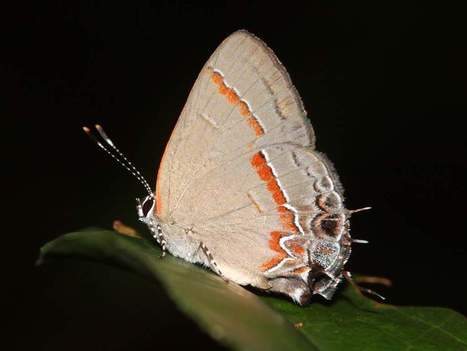

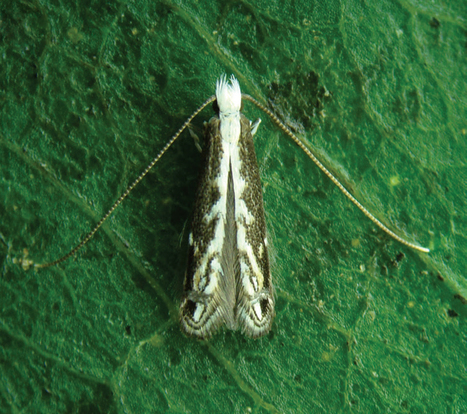
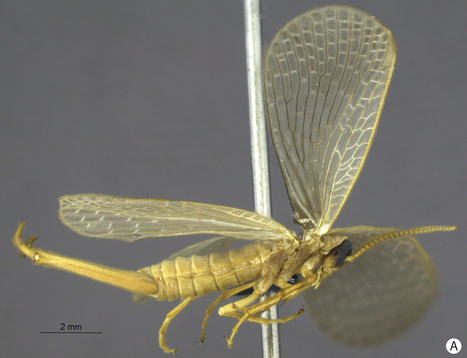
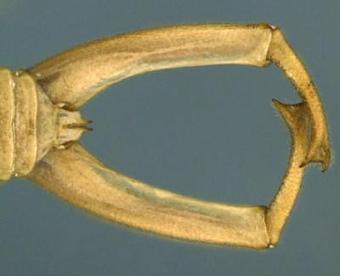
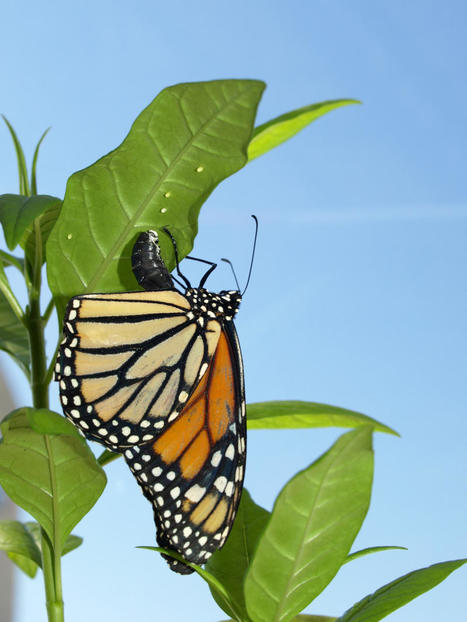
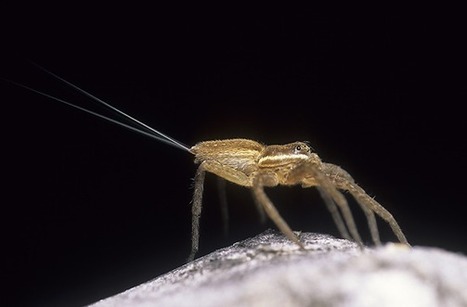
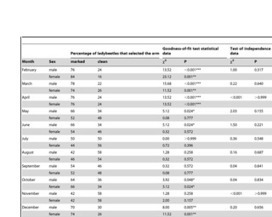

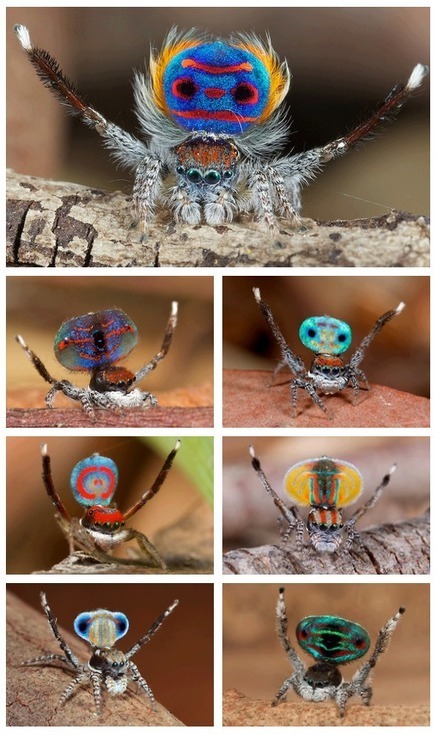
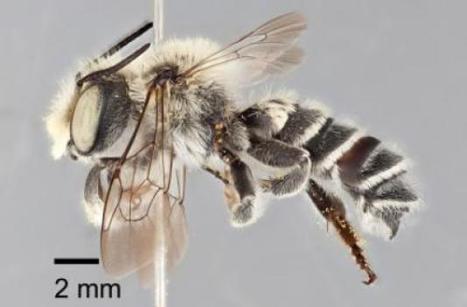
![[2012] Influence de la plante hôte sur les stades de développement de Borocera cajani (Lepidoptera: Lasiocampidae) | Insect Archive | Scoop.it](https://img.scoop.it/OQlCkTGqUmzeFXG2NnW0hDl72eJkfbmt4t8yenImKBVvK0kTmF0xjctABnaLJIm9)

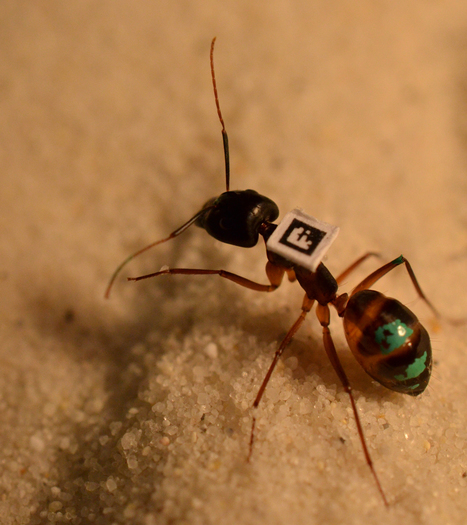


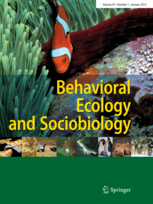


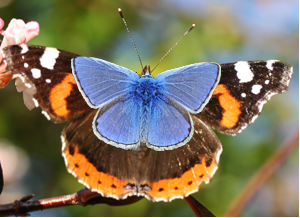
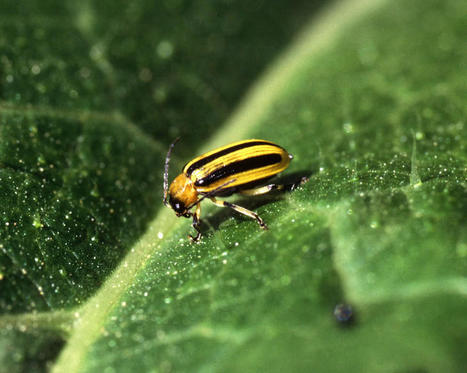





(Sanofi Pasteur - Mai 2011)